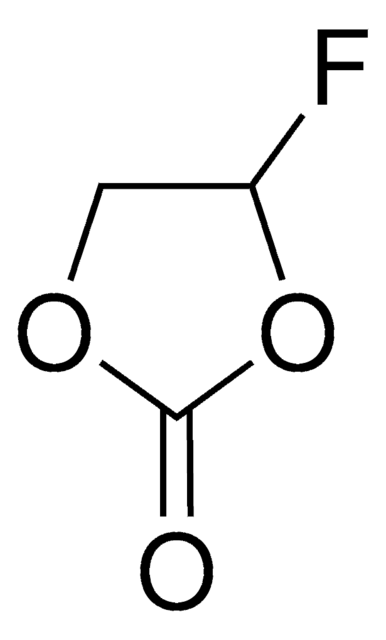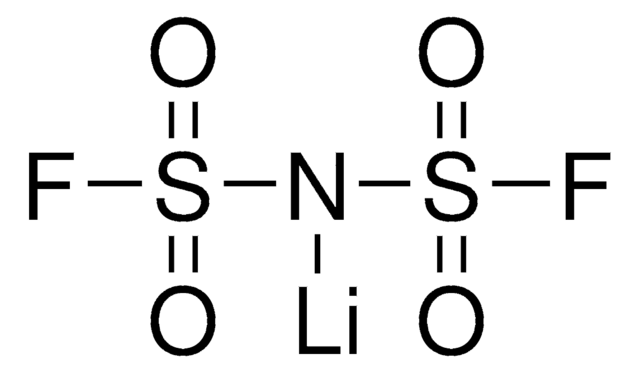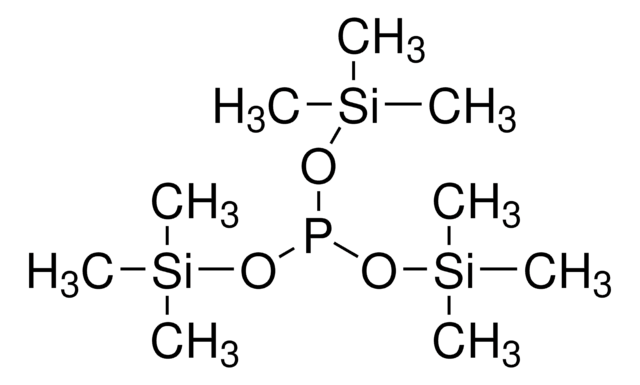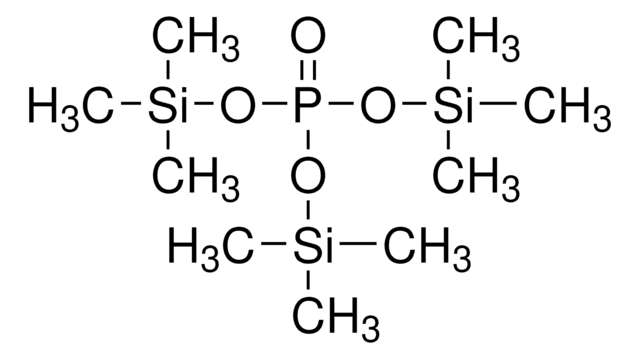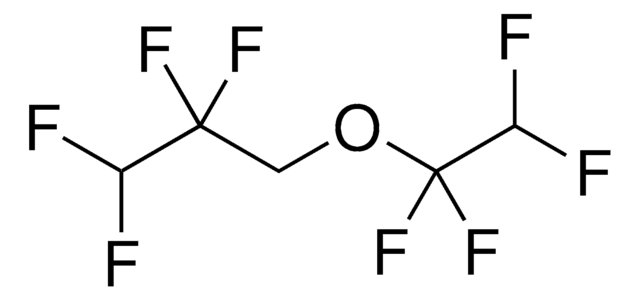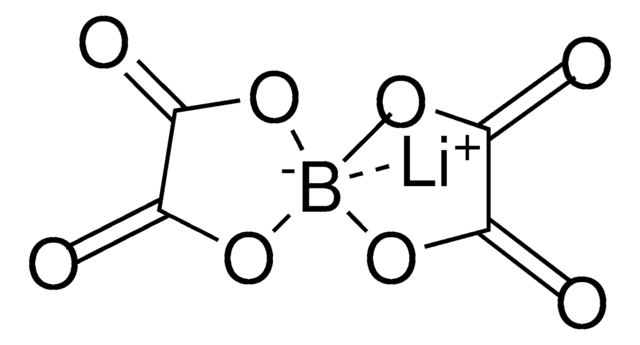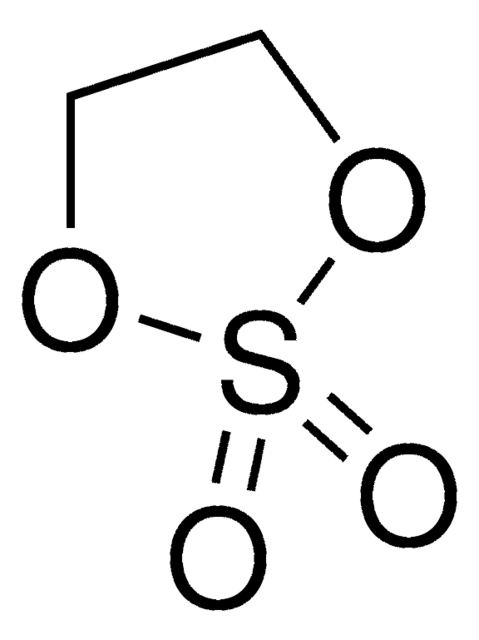933708
Lithium difluorophosphate
≥99% trace metals basis, acid ≤ 200 ppm, battery grade
Sinonimo/i:
LiDFP, LiF2PO2, Lithium difluorophosphinate, Lithium phosphorodifluoridate
About This Item
Prodotti consigliati
Grado
battery grade
Livello qualitativo
Descrizione
acid ≤ 200 ppm
Saggio
≥99% trace metals basis
Stato
powder
Impurezze
≤200 ppm acid
Cationi in tracce
Ca: ≤5 ppm
Cr: ≤10 ppm
Fe: ≤5 ppm
K: ≤5 ppm
Na: ≤5 ppm
Pb: ≤5 ppm
applicazioni
battery manufacturing
Categorie correlate
Descrizione generale
Applicazioni
Prodotti correlati
Avvertenze
Danger
Indicazioni di pericolo
Classi di pericolo
Acute Tox. 3 Oral - Acute Tox. 4 Dermal - Aquatic Chronic 2 - Eye Dam. 1 - Skin Corr. 1B - STOT RE 1
Codice della classe di stoccaggio
6.1C - Combustible acute toxic Cat.3 / toxic compounds or compounds which causing chronic effects
Classe di pericolosità dell'acqua (WGK)
WGK 3
Scegli una delle versioni più recenti:
Certificati d'analisi (COA)
It looks like we've run into a problem, but you can still download Certificates of Analysis from our Documenti section.
Se ti serve aiuto, non esitare a contattarci Servizio Clienti
Possiedi già questo prodotto?
I documenti relativi ai prodotti acquistati recentemente sono disponibili nell’Archivio dei documenti.
Il team dei nostri ricercatori vanta grande esperienza in tutte le aree della ricerca quali Life Science, scienza dei materiali, sintesi chimica, cromatografia, discipline analitiche, ecc..
Contatta l'Assistenza Tecnica.